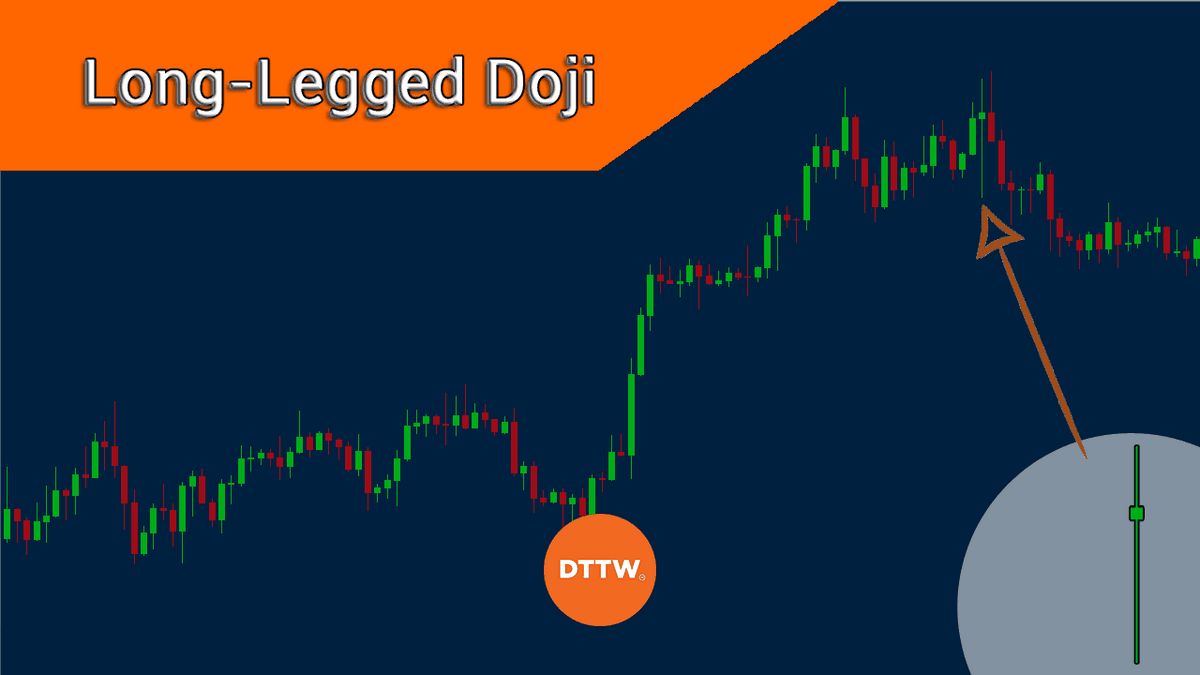Long-Legged Doji Definition Significance and How to Trade

Contents
Long-Legged Doji: Definition, Significance, and How to Trade
What Is the Long-Legged Doji?
The long-legged doji is a candlestick with long upper and lower shadows, and a small real body due to its approximately equal opening and closing price.
Key Takeaways
- The long-legged doji is a candlestick with long upper and lower shadows, and an approximately equal opening and closing price.
- The pattern indicates indecision, especially after a strong advance or decline.
- Some traders act on the one-candle pattern, while others wait and observe the price movement after the long-legged doji.
- The pattern doesn’t always indicate a significant change and may just be a minor blip in the current trend.
Understanding the Long-Legged Doji
The long-legged doji signals indecision about the future direction of the underlying security’s price. It may also mark the start of a consolidation period or a new trend formation after one or more long-legged dojis.
Long-legged dojis have the most significance during strong uptrends or downtrends. They suggest that supply and demand are approaching equilibrium and a trend reversal may occur. This indicates a change in sentiment.
For example, during an uptrend, the price moves higher, and most periods close above the open. The long-legged doji indicates a battle between buyers and sellers where they ended up evenly matched. This differs from earlier periods where buyers were in control.
The pattern appears across all time frames, with greater significance on longer-term charts due to increased participant involvement. It is part of the broader doji family, which includes the standard doji, dragonfly doji, and gravestone doji.
Long-Legged Doji Trading Considerations
There are multiple ways to trade a long-legged doji, although trading based solely on this pattern is not necessary. Some traders prefer to wait for confirmation through subsequent price movements after the long-legged doji. These dojis can occur in clusters or as part of a larger consolidation, which may lead to a trend reversal or continuation depending on how the price breaks out.
If you want to trade the pattern, here are some general trade ideas:
- Entry: Wait for the price to move above the high or below the low of the long-legged doji to enter a long or short position. Alternatively, wait for a consolidation to form around the long-legged doji and enter a long or short position when the price breaks out of the consolidation.
- Risk Management: Place a stop loss below the long-legged doji or consolidation if entering a long position, and above if entering a short position.
- Market Structure: A long-legged doji near a major support or resistance level increases the likelihood of a valid signal. For example, if the price forms a long-legged doji near a major resistance level during an uptrend, there is a higher chance of a price decline if it falls below the low of the doji.
- Taking Profit: Long-legged dojis don’t have specific profit targets, so traders need to determine their own exit strategy. Technical indicators, moving average crossovers, or fixed risk/reward ratios can be used.
If you’re interested in learning more about the long-legged doji, consider enrolling in one of the best technical analysis courses.
Long-Legged Doji Example
The chart below shows examples of long-legged dojis in Tesla Inc. These examples demonstrate that the pattern alone is not always significant, but the overall context and market structure are.
On the left, the price falls and forms a long-legged doji, leading to a consolidation before another price drop.
On the right, the price falls, consolidates, and forms a long-legged doji slightly below the consolidation low. The price then rallies and breaks higher. This doji has a slightly larger real body.



